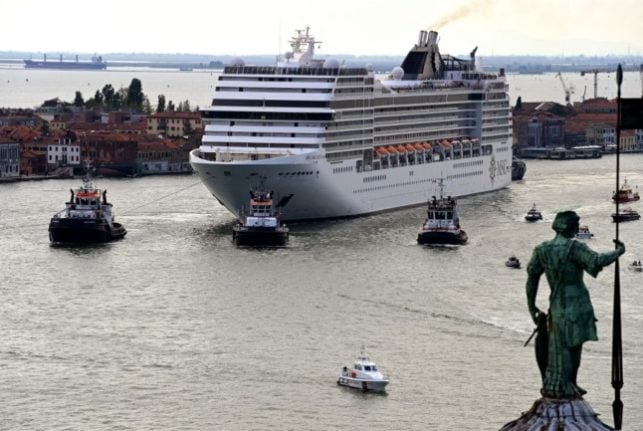In the forsaken village of Africo in southern Italy, where director Francesco Munzi set his mafia film Black Souls, competing for the Golden Lion in Venice, even the gangsters are afraid.
"Africo has a frightening history. That area of the south was famous for kidnappings in the 1970s and now is the heartland of the Calabrian mafia. I admit I was scared to go," the 45-year-old Italian director told AFP in a beach-side interview.
"Even the criminals, who cannot show any weakness, have a certain fragility. The clans are full of people who want out, who commit suicide," Munzi said.
The film centres on three very different brothers: drug smuggler Luigi, who arranges shipments of cocaine with South American drug lords, the bespectacled Rossi, a dodgy accountant in Milan, and the reclusive Luciano, the eldest.
Unlike the others, Luciano cannot get over the death of his shepherd father in an apparent mob hit, and he refuses to have anything to do with his criminal siblings and struggles to keep his only son Leo out of their clutches.
When Leo, whose prospects like most young people in the poverty-hit south look bleak, shoots up a bar belonging to a rival clan, the family is forced back to Africo to attempt to defuse the situation – with devastating results.
At the heart of the film, based on a book by the same name by Africo-native Gioacchino Criaco, are complex inter-clan dynamics – rather than with rival gangsters – and the doubts and fears harboured by those caught within.
'The real black souls'
The director, who made his name with the immigrant dramas Saimir and The Rest of the Night, spent three days at Criaco's house getting to know both the historic Africo, in the Aspromonte mountains, and the new one on the coast.
"The old Africo is in one of the most stunning but inaccessible places in Europe. You need a jeep to get to the centre. Most people live in the new Africo on the coast, a construction-site graveyard," he said.
The film switches back and forth between the two locations, but today's Calabrian crooks belong very much to urban life and modern Italy, "far from the traditional idea of the mafia. These are people with degrees," he said.
Known as the 'Ndrangheta, the organization boasts networks of hundreds of family gangs and is even more feared and secretive than the Sicilian Mafia.
The name 'Ndrangheta comes from the Greek for courage or loyalty and its tight clan structure has made it famously difficult to penetrate.
But Munzi found auditioning locals for supporting roles in the movie was a useful tool in getting them to open up about their experiences living in a town controlled by one of the most powerful and dangerous syndicates in the world.
"This is a town abandoned by the state where no positive projects have ever arrived. So with this opportunity, even those who had a terrible past opened up, they let themselves go because in acting, they could be free," he said.
The film does not attempt to match the gritty realism of Matteo Garrone's Gomorra on the Naples-based Camorra, and neither is the growing phenomena of female bosses tackled, with women here relegated to preparing food and weeping over coffins.
But Munzi defended his female characters, saying "we left them in silence because they're not just complicit, they command through a look. They are the real black souls of the title."



 Please whitelist us to continue reading.
Please whitelist us to continue reading.
Member comments